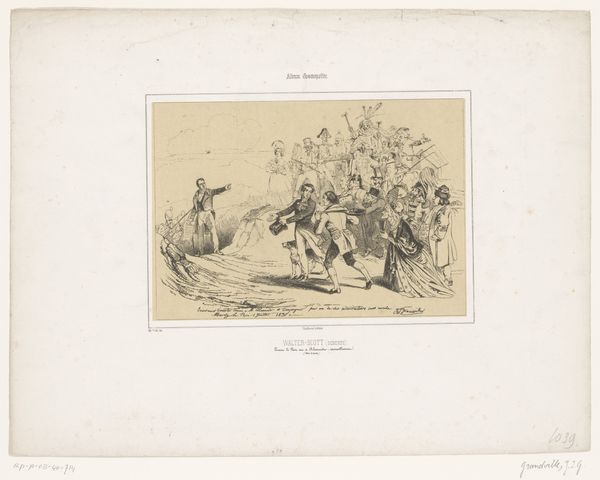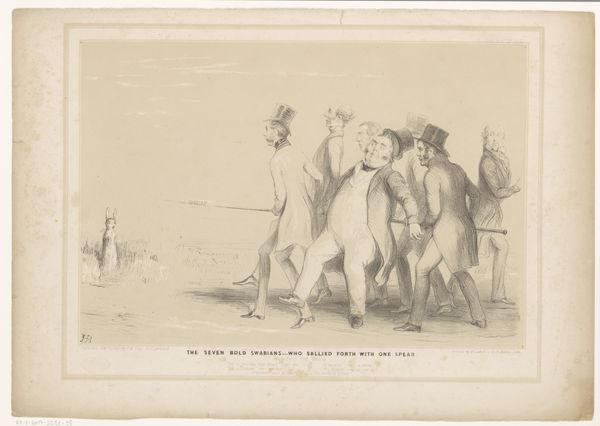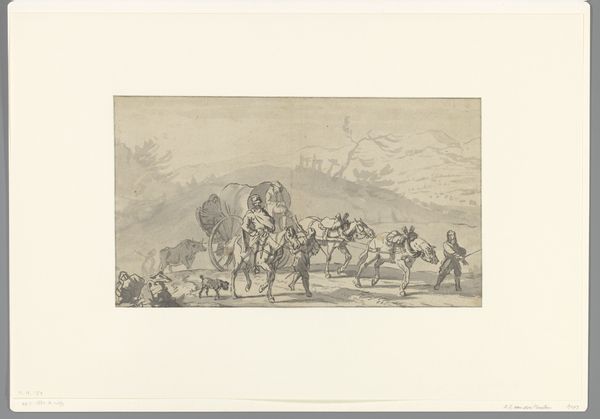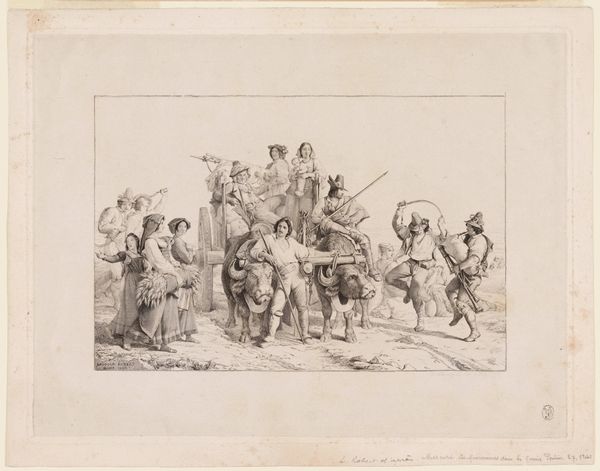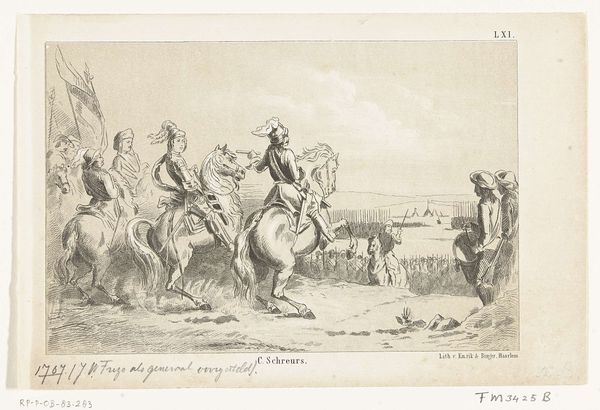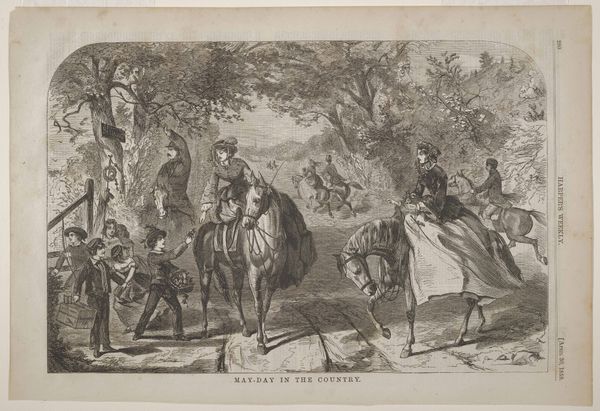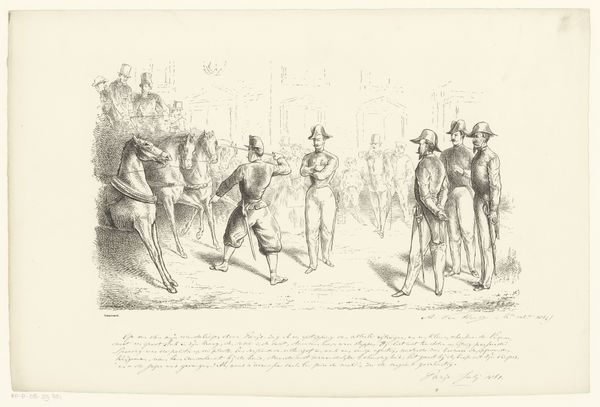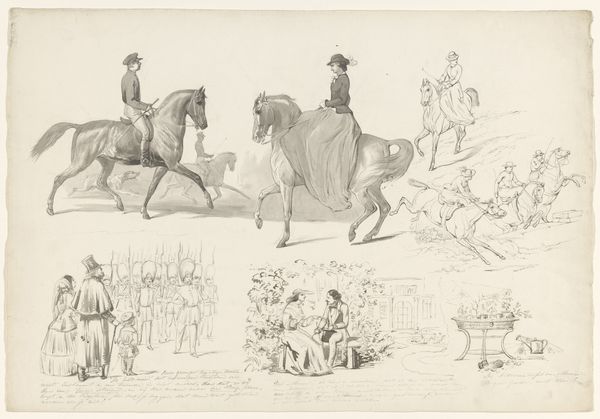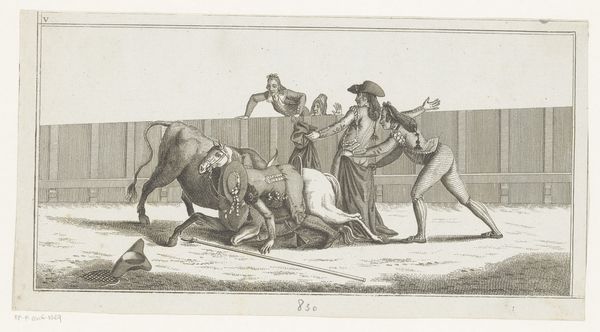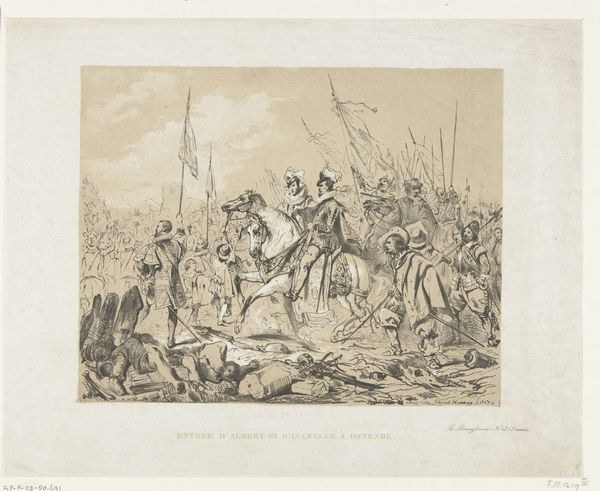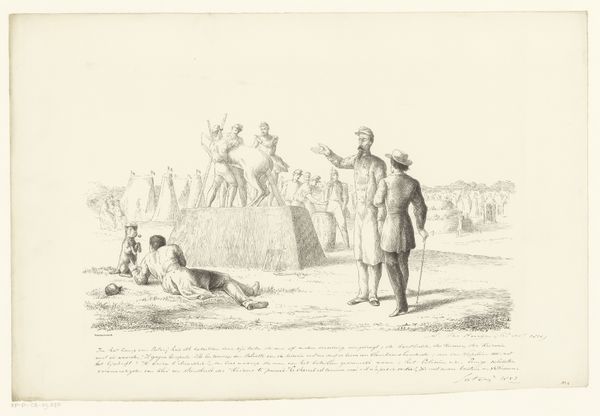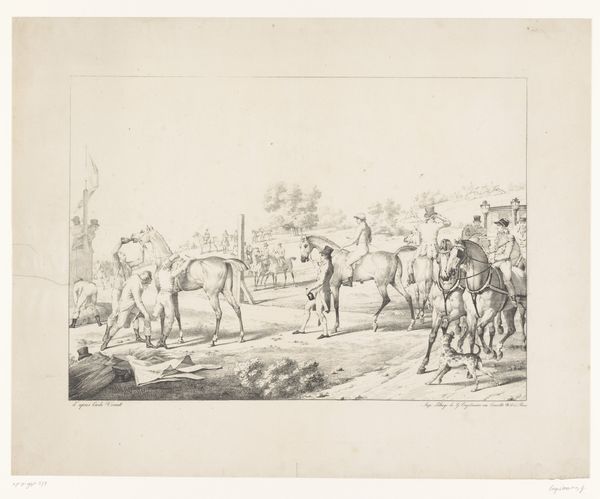
print, pen, engraving
# print
#
pencil sketch
#
old engraving style
#
landscape
#
pen-ink sketch
#
line
#
pen
#
history-painting
#
engraving
#
realism
Dimensions: height 164 mm, width 244 mm
Copyright: Rijks Museum: Open Domain
Curator: Here we have "Overgave van Sluis, 1587" an engraving by Christiaan Lodewijk van Kesteren made between 1853 and 1861, depicting a historical scene. Editor: My first impression is of a carefully rendered tableau, somber in its formality. The lines are precise, creating a sense of distance. Curator: Indeed. Considering the social context, such prints were vital for disseminating information and shaping public opinion about historical events, weren't they? Engravings like these democratized access to visual narratives, reaching audiences far beyond the elite circles who commissioned paintings. The availability of print as a medium highlights how images became tools for constructing collective memory. Editor: Absolutely. But look closer at the formal qualities; the artist's strategic use of line to define form, the composition structured to guide the eye towards the central figures on horseback... these are the keys to its effect. Note how the light catches the figures, the details rendered, the way the line work brings everything forward. Curator: The materials used—paper, ink, the engraving tools—speak to a particular mode of production. Skilled artisans were involved in the reproduction and dissemination of images, operating within specific economic and social structures of the time. This labor underpinned the art, impacting what and how it would represent society. Editor: Though it looks detailed at first glance, note the areas left unrendered. Are those negative spaces or are they notational gaps to signal open interpretation? Curator: That brings up a relevant question on how history gets manufactured through reproducible artworks, and their accessibility, not solely relying on singular objects like paintings. The production allows them to exist in various spaces as cultural signifiers. Editor: An observation well noted. This image reminds us of the enduring power of line and form to convey stories, whether viewed through a formalist or materialist lens. Curator: Agreed. It highlights the vital role accessible prints play in shaping our comprehension and appreciation of the past.
Comments
No comments
Be the first to comment and join the conversation on the ultimate creative platform.
